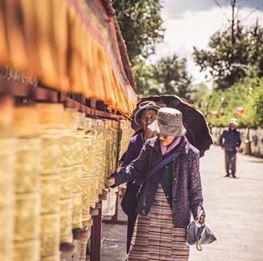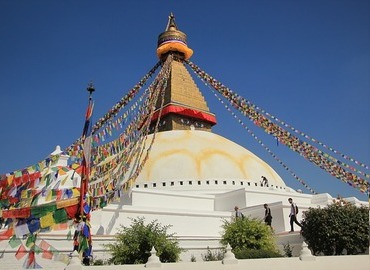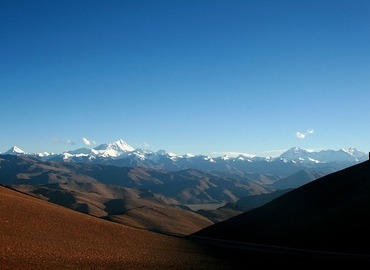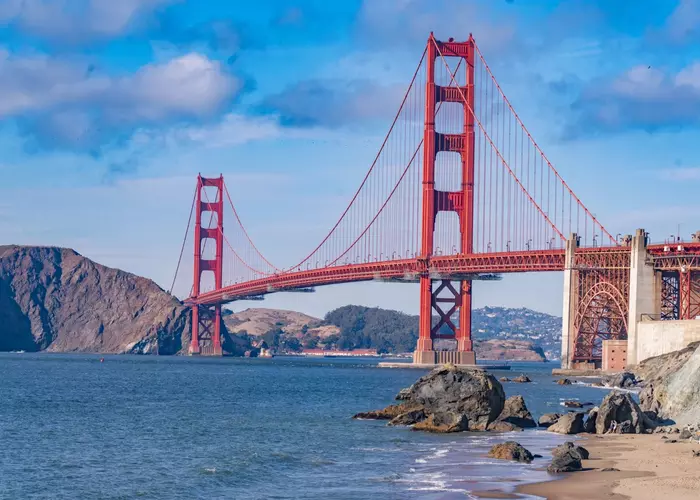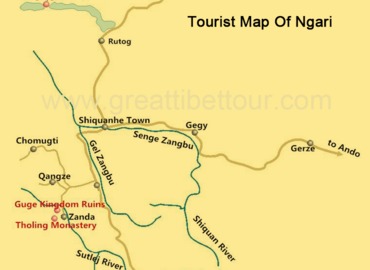Lhasa - Capital of Tibet
- Last Updated: 2023-06-11
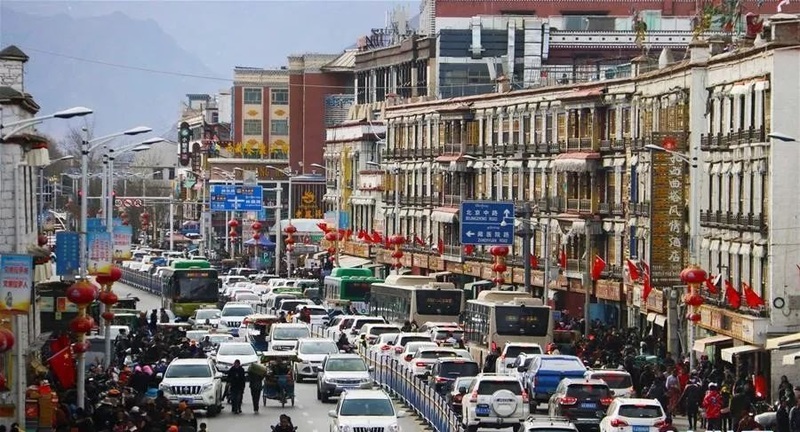
Lhasa literally means "place of the gods", which is considered by the Tibetans as their holy land. As the capital of the Tibet Autonomous Region, Lhasa city is located in the southwest of the People's Republic of China. It has long been the center of Tibet's politics, economy, culture, and religion. With a population of about 558,900, Lhasa has 3 major nationalities (Tibetan, Han, Hui) speaking Tibetan, Mandarin, and Jin( a Chinese dialect from Hohhot region).
As an international tourist city with a high plateau and ethnic characteristics, you can see many lamas in dark red monks' clothes and Tibetans in colorful costumes. In Lhasa, you can sit in the sun, have a cup of buttered tea, watch pilgrims kowtow, follow people to pray at Barkhor Street, and worship the splendid Potala Palace, etc.
Lhasa at a Glance
- Name: Lhasa (拉萨; lā sà (/la-sa/))
- Meaning: "place of the gods"
- Previous names: Rasa, Forbidden City(due to its inaccessible in the past)
- Altitude: 3,650 meters (11,975 feet)
- Location: 29.39N, 91.07E, in southwestern China
- Geography: in the middle of the Tibetan Plateau; on the north side of the Himalayas
- Main attractions: Potala Palace, Jokhang Temple, Norbulingka
- Nearby cities: Shannan, Shigatse, Nagqu, Nyingchi
- Most popular food: Tsampa, butter tea, yak meat, yak yogurt, sweet tea
- Transportation: Lhasa Gonggar Airport, Lhasa Train Station
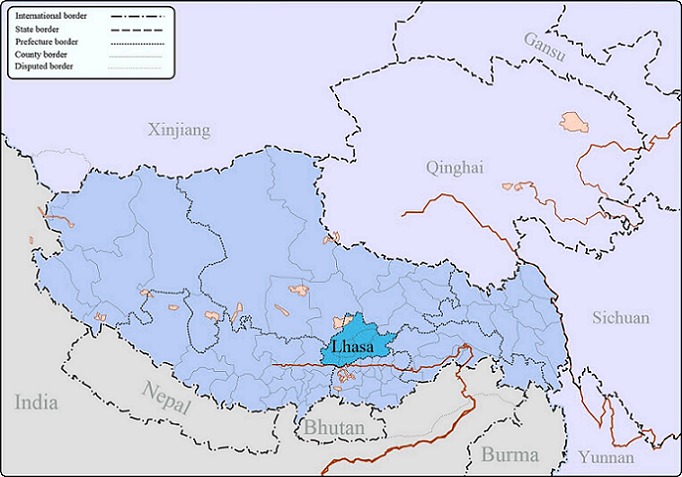
Lhasa History
The history of this majestic town dates back to ancient times, in the 7th century to be exact, led by Songtsän Gampo, the third Tibetan king, who is the highest person in the Tibetan Empire at that time. His empire was making its rise up in the Brahmaputra River after they occupied the Zhangzhung kingdom from the west, and did a bold move of moving the capital from Chingwa Taktsé Castle in Chongye County to Rasa (now known as Lhasa). The astonishing leader nurtured the land and even built the first palace in the territory which is now known as the Potala Palace on top of Mount Marpori in the seventh century. He later conquered the whole Tibetan region and made ties with Nepal and the Imperial Tang Court. He then converted to Buddhism and built 2 temples, the Jokhang (or Rasa Trülnang Tsulagkhang) and Ramoche Temples to house 2 Buddhist statues- the Akshobhya Vajra (depicting the Buddha at the age of eight) and the Jowo Sakyamuni (depicting Buddha at the age of twelve). The city suffered greatly during the 9th century during the rule of Langdarma but was later on brought back to its former glory during the rise of the 5th Dalai Lama.
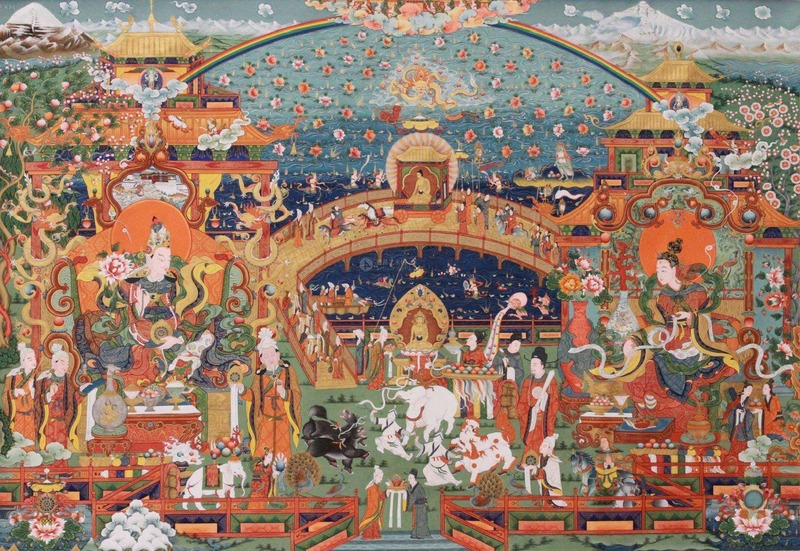
Lhasa Weather
The annual temperature difference in Lhasa is small, but it is large between day and night. "Four seasons in a day" is a true description of the weather in Lhasa. During the peak tourist season from June to September every year, the highest temperature in Lhasa can reach 27-29℃ at noon, giving people a feeling of summer. In the evening, the temperature begins to drop to 15℃, so people may have a sense of cool autumn; At midnight, the temperature drops to 0-5℃. The next morning after sunrise, the temperature would rise, as if it's as warm as spring.
The dry season and the rainy season are distinctively divided. The rainy season in Lhasa is from June to August, but it usually rains at night, so even if you travel in the rainy season, the night rain would not affect your trip the next day. The next morning, you only can tell the night rain from the wet ground. The sun will illuminate the land soon.
Lhasa is known as the "sunshine city" for its 3,021 hours of sunshine a year, with an average of more than 8 hours of sunshine a day. Many tourists choose to go to Lhasa in winter to sunbathe and feel the unique charm of Tibet under the sunshine of the holy city. The sunlight here is so intense that you may get sunburned in a day. It's better to take sun protection measures.
>> Read more about Lhasa Weather
Lhasa Altitude
Lhasa is 3,650 meters above sea level. The air is thin, and the annual average oxygen content in the air is only 64.3 percent of that in the plains. When people are used to living in plain areas go to Lhasa, under the influence of altitude, dry air, cold temperature, strong ultraviolet, low air pressure, low oxygen content and other factors, they may feel discomfort, which is called altitude sickness. The symptoms of mild altitude sickness are generally mild headaches, trouble sleeping, mild chest tightness, and excessive excitement. But severe altitude sickness can cause severe headaches, chest tightness, difficulty breathing, etc. Therefore, it is important to understand and learn how to prevent altitude sickness before departure.
>> Read more about Lhasa Altitude
Lhasa Major Attractions
Aside from its amazing history, Lhasa city also has some breathtaking views that can equal its history when it comes to beauty, with three UNESCO world heritage sites, namely, Potala Palace, Jokhang Temple, and Norbulingka. Each one is worth a visit and a must if you really want to commit to your trip and experience a maybe once-in-a-lifetime visit.
On top of this list is the Potala Palace, which was once a symbol of the unity of politics and religion. It is the main residence of the Dalai Lama, the living God for Tibetans. Now it turned into a museum after its restoration when the 14th Dalai Lama fled to India in 1959 in order to escape the Tibetan uprising. The site was a favorite of King Songtsen Gampo, the first leader of Lhasa, to meditate and relax. The site was renovated in 1989, 5 years later, it became one of the UNESCO heritage sites. The appearance of the Potala Palace is magnificent. It is an outstanding representative of Tibetan architecture and the essence of Chinese traditional architecture. The interior is painted with a large number of murals, forming a huge gallery of painting art. Each hall contains precious cultural relics and Buddhist works of art, as well as the successive Dalai Lama's Stupas.
After a trip to the Potala Palace, many tourists would head towards Chokpori, which is the best angle to shoot the Potala Palace(especially halfway up the mountain), also the former site of the Tibet Medical School founded in 1413. Go down a sacred path, you will see Lingkhor, the outer pilgrim road in Lhasa which happens to have a twin inner road - Barkhor. The Outer Road Lingkhor, surrounds Jokhang Temple, Chokpori hills, Potala Palace, and Romoche Temple, stretching 8 kilometers (5.0 miles). It was once covered with pilgrims both men and women, young and old, the rich and the beggars.
Jokhang Temple was built in the center of the Lhasa old town. Estimated dates for Jokhang Temple's founding range from 639 to 647 AD. Jokhang temple is the most sacred temple in Lhasa, where enshrined 12-year-old life-sized Buddha statue of Sakyamuni. The Buddha statue was consecrated by Sakyamuni himself, which makes Jokhang Temple a supreme position in Tibetan Buddhism. Many pilgrims even prostrate along the icy Sichuan-Tibet Highway or Qinghai-Tibet Highway, going through untold hardships to worship the Buddha. In front of the Jokhang temple, dozens of pilgrims, men and women, in long aprons and wooden pull-boards, face the temple, bend down, straighten their bodies, touch their heads and noses to the ground, then get up and repeat. This site was listed in UNESCO heritage sites in 2000.
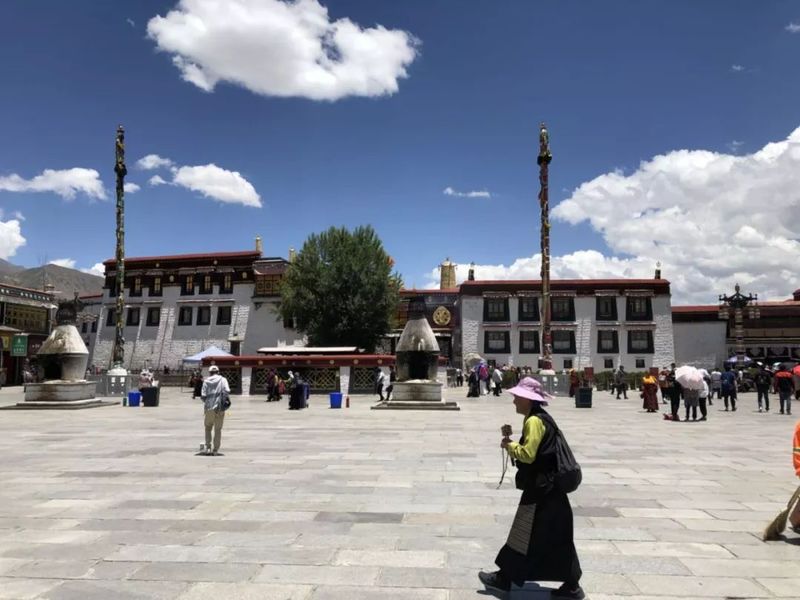
Norbulingka Palace is situated on the west side of Lhasa, a short distance to the southwest of Potala Palace. Norbulingka was the summer residence of the successive Dalai Lamas from the 1780s up until 1959. During summer, the Dalai Lamas came here to spend the summer, attended to local government affairs, and carried out religious activities. Therefore, it's commonly known as the Summer Palace in Lhasa, which means "Treasure Park" in Tibetan. Walking into the flower garden, the plants are so luxuriant that the buildings seem to be covered by tall trees. Walking along the flagstone path, you can enjoy the tranquility around you, which is really hard to see in Tibet at such a high altitude area.
>> Read more about Lhasa Attractions
Lhasa Traffic
Located in the plateau area, Lhasa used to be isolated from mainland China for a long time, and the traffic was very backward, relying only on the roads as the links with the outside world. Now there're great changes in the traffic situation in Lhasa, forming a three-dimensional transportation network with the road, railway, and air as a whole. The three major roads to Tibet are Qinghai-Tibet, Sichuan-Tibet and Xinjiang-Tibet. In addition, there are popular highways such as Sino-Nepal Highway, Yunnan-Tibet Highway, Heihe-Nagri Highway and Sichuan-Tibet Highway(south circle), forming a road transportation network centered on Lhasa. Since 2006, with the opening of the Qinghai-Tibet railway, tourists can take direct trains to Lhasa from Beijing, Shanghai, Guangzhou, Chengdu, Chongqing, Lanzhou, Xi'an, and Xining. Civil air transport also opened up the above domestic routes, and the only international route between Lhasa and Kathmandu(Nepal) is available now. From Lhasa to Shigatse and Nagqu are accessible by road and train; to Shannan, Nyingchi, Chamdo, and Nagri areas are accessible by air and road.
>> Read more about how to get to Lhasa
Conclusion
In conclusion, Lhasa City is an amazing place to relax and reconnect with the soul, but always keep in mind to respect local customs and traditions when traveling. Here are some to-do notes for you to pay attention to. Firstly, it is better to ask for permission when taking pictures or filming any locals, especially the elders. Second, do not wear clothes that are inappropriate or clothes, which are too revealing, especially when visiting holy places. Lastly, kindly offer a small amount of money when you are visiting shrines, as it is a small price to pay for a lifetime of experience. Lhasa is a paradise waiting for you and we hope that you would be a part of your trip. Travel safe and have a wonderful time!
Email response within 0.5~24 hours.


